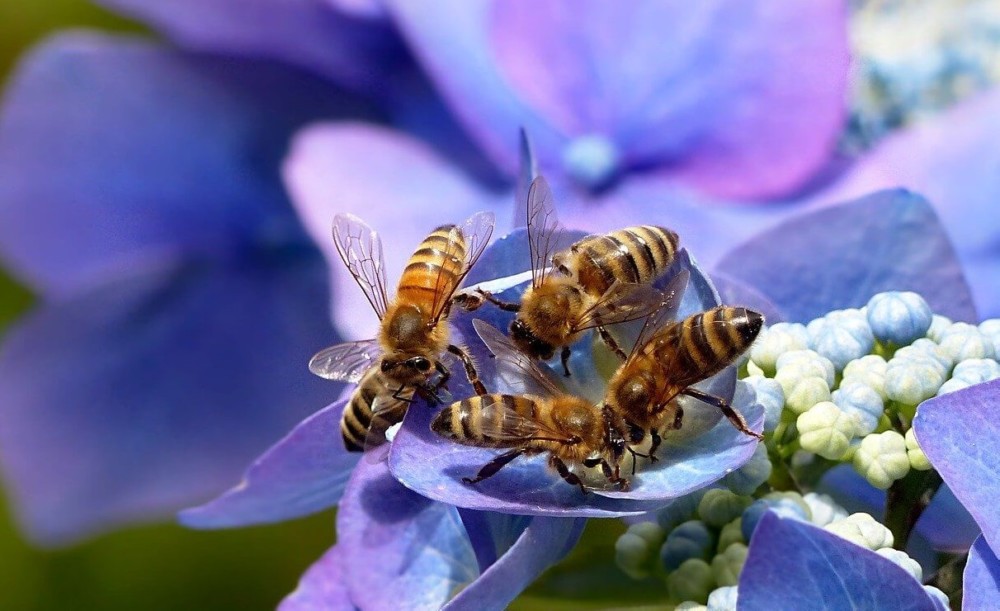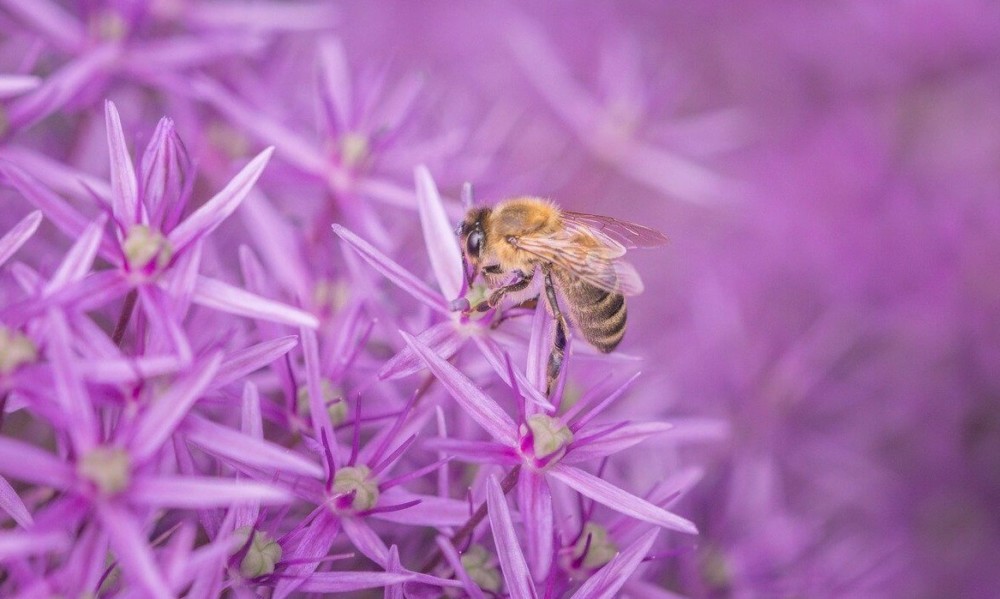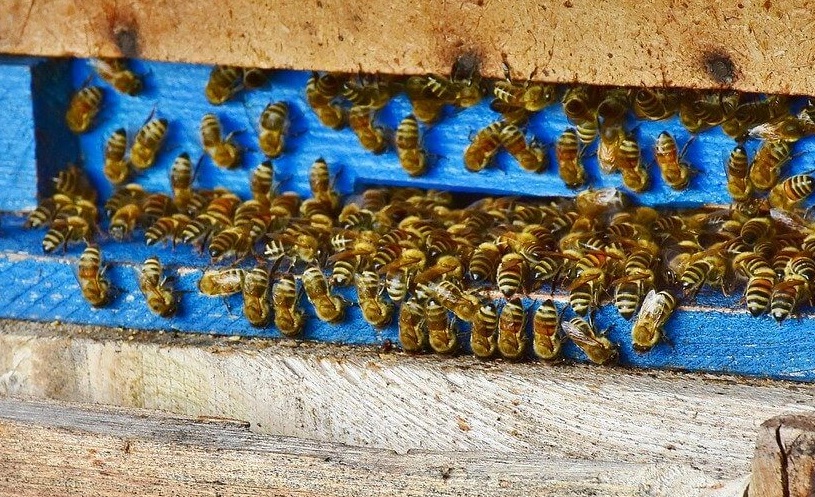Bees are arguably one of the most useful and important insects. Bees pollinate one-third of the world’s crops. Without bees, it would be a lot harder to grow enough food and we wouldn’t be able to enjoy crops like most fruits and veggies, fibers and plants used for raw materials in production.
Bees are under threat. Pesticides, urbanization, and industrial farming have helped to contribute to the cause of Colony Collapse Disorder or CCD. In the winter of 2018/19, an estimated 38% of all bee colonies died off.
And, there’s good news!
Even a very small effort can help to preserve the bees in your area. Growing a bee garden makes a huge difference. Even a few potted bee plants that provide nectar for bees in an urban area can save a colony from starvation.
There are many benefits of attracting bees:
- Increased pollination in your garden
- You make a difference environmentally
- Beautiful plants and flowers
Planting a bee garden is easy and can be done with very little time or expense. Of course, if you love gardening and have a little land, you can create a larger sanctuary for bees.
How To Create A Bee Garden:
- Plant Nectar Rich Plants
- Bees Love Colorful Plants
- Rethink Parts of Your Lawn
- Allow A Little Wildness
- Add Bee Nests
- Don’t Use Pesticides
- Add A Bee Bath
- Plant For Each Season
- Group Plants Together
- Raise a Beehive
Let’s dive into the details and you’ll see how easy it is to create a bee garden and help out the local ecosystem!
Plant Nectar and Pollen Rich Plants
Bees use pollen and nectar to survive. Nectar provides bees with sugar and carbohydrates that they need for energy. It’s very similar to sugar water provided by the flower. Honeybees use nectar to produce honey, which is essentially evaporated nectar, although it’s a bit more complicated than that.
Pollen provides bees with proteins and fats. Pollen is the powdery residue near the reproductive organs of the flower. Bees use pollen primarily as food for the larvae, while nectar is often used as more immediate food.
Did you know?
Each type of bee uses and collects pollen in different ways, but as bees move from plant to plant, they pollinate and help the plants to reproduce. It’s accidental by the bees, but critical for human food production.
By planting flowers that are rich in nectar and pollen, you will attract bees and help them. As an added benefit, your garden will produce better!
There are hundreds of plants that attract bees. No matter where you live, or your climate, there are bee-friendly plants.
Single Petal Flowers
Single petal flowers usually have more nectar than double petal flowers. Double petal flowers are mutants in the flower world. They have been cultivated so that the blooms look fuller.
But, the extra layer of flowers comes from the flower’s reproductive parts. Their stamens have grown into petals and as a result, the flower can’t reproduce.
This means that double petal flowers have less nectar and the nectar they do have is much harder for bees to reach, if not impossible.
Double petal flowers tend to bloom longer and can’t reproduce. This makes them super popular with many gardeners. But, it doesn’t help the bees.
If you are wondering what single petal flowers look like, consider the difference between most roses and the wild rose. Wild roses have 4-8 petals, while popular cultivated roses can have between 25-125 petals per rose!
- Choose flowers rich in nectar
- Grow single petal flowers instead of double petal flowers
There are many types of bee-friendly flowers including, bee balm, torch lily, lavender, salvia, catmint, Fuschia, and thyme.
Pollen rich flowers are those that often have a strong scent. This can cause issues for those with allergies. Check out our list of Allergy-friendly bee flowers that you can still grow.
Bees Love Colorful Plants
As a general rule, bright colors attract bees. That’s because these colors are best seen with ultraviolet vision. Bees don’t exactly see in ultraviolet vision, but they do see closely to it.
And, did you know?
Bees cannot see the color red. It looks black to them. They love blue, purple, orange, and yellow. By growing colorful flowers, you can make a big difference in helping bees.
Another benefit is that many of the same flowers also help to attract hummingbirds, butterflies, and other wild birds. Although butterflies have a different vision than bees, they still see in a form of ultraviolet light.
- Plant bright colored flowers that are blue, purple, or yellow
Check out this video that shows how bees see flowers and color:
Rethink Parts of Your Lawn
It can be tempting to have a perfectly manicured lawn, but converting even a small portion of your existing lawn to a bee sanctuary can go very far in helping your local bees.
Consider turning the edge into a small flower bed, or creating a space in the center. You can help the bees and still maintain a cultivated look with just a little effort and time.
Most people don’t realize,
That the traditional lawn is one of the least environmentally beneficial uses of land. Grass requires a lot of water, it depletes the soil over time of nutrients and micronutrients. While lawns are better than concrete and asphalt, they are on the bottom rung of the ladder environmentally.
Lawns are popular, but usually, the cost of a lawn is that the natural animal habitats and plants have been replaced by grass.
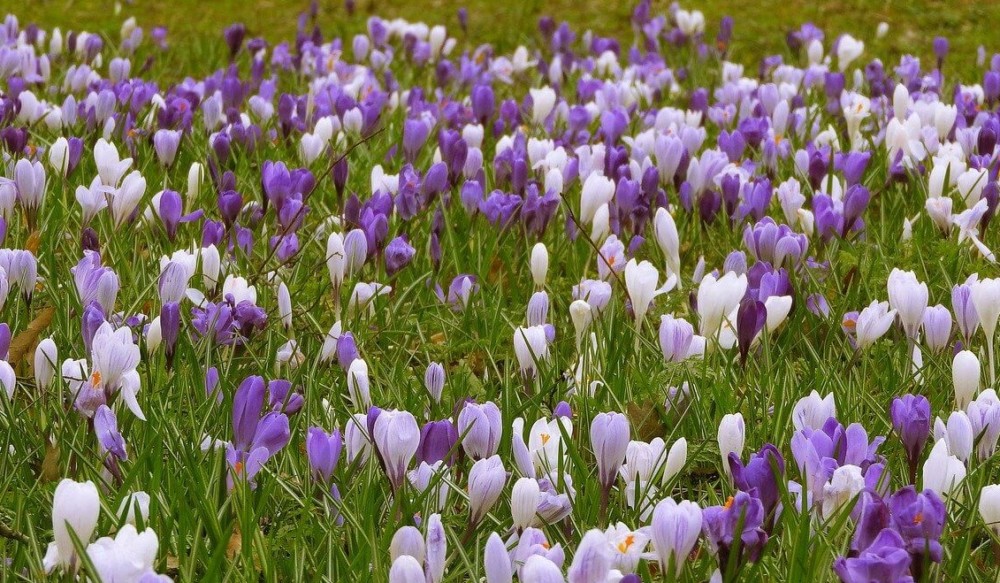
Homeowners use pesticides to keep trees, clover, dandelions, and other local plants from retaking the lawn back. They use gas-powered mowers that emit carbon into the air to keep the lawn short. And they add nitrogen into the soil that would have normally been replenished with natural local plants.
Harms of grass over other landscaping options:
- Grass usually requires more water than local plants
- Grass requires pesticides and unnatural amounts of nitrogen into the soil to stay nice
- Grass requires mowing, which releases carbon into the air
- Grass eliminates natural habitats and food for animals and insects- putting a strain on biodiversity
Instead, consider taking all or part of your lawn to create eco-friendly spaces. Gardens, fruit trees, and wild places all allow local plants and trees to grow and provide a place for bees, butterflies, and birds to eat, nest, and live.
If you still want a lawn, consider replacing existing popular varieties with grasses that are more natural such as meadow grasses and other local varieties. Mow it less often and allow dandelions, clover, and violets to grow throughout your lawn.
These small steps make a huge difference.
- Replace commercial turf grasses with local grass and meadow grass varieties that use less water and require less maintenance
- Mow lawn less often or plant grasses that naturally stay short
- Allow “weed” flowers to grow such as dandelions, clover, and violets, all of which provide needed food for bees and butterflies.
Allow A Little Wildness
Along the same lines, consider allowing at least a portion of your yard to grow into a more wild space where you don’t spray pesticides, cut down natural weeds, or keep everything under control.
Allowing local plant varieties and flowers will attract bees and encourage natural habitats. Wildflower gardens are a great way to provide the raw materials for local wildlife, seeds for birds, and nectar for bees.
When planting wildflower gardens, remember to stay away from highly culturized flowers and hybrid plants. Avoid pesticides and insecticides as these will kill and harm bees and other helpful insects.
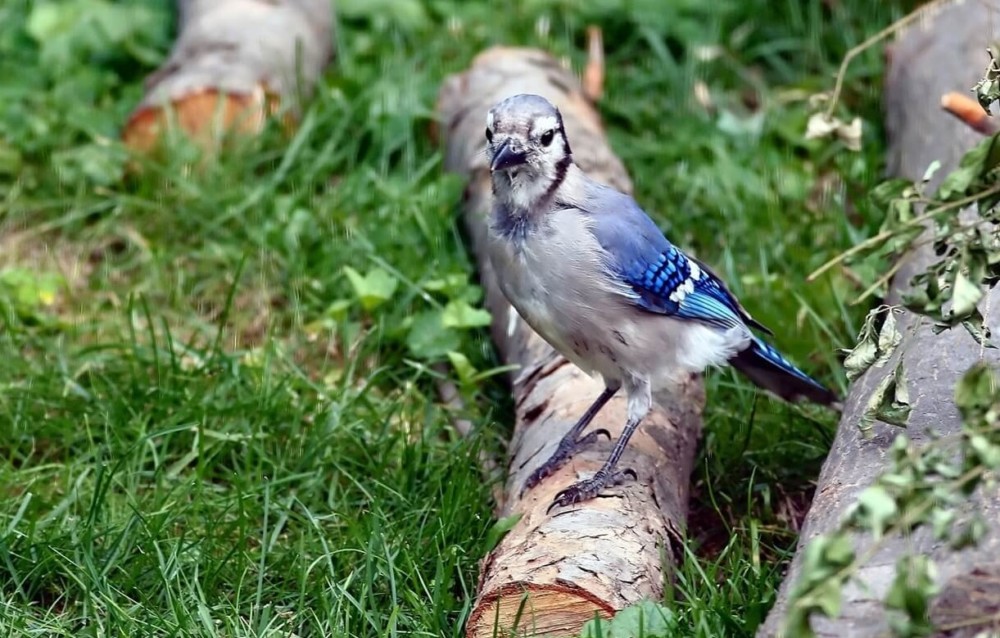
Lastly, check out your local extension office and be familiar with invasive species. Don’t plant or allow invasive species to grow in your wild spaces and these plant varieties will kill out the natural and local varieties.
- Plant local flowers, trees, and plant varieties in a wild space
- Avoid pesticides and insecticides
- Avoid crossbred, cultivated, and hybrid flowers and plants
- Keep an eye out for invasive species.
Another benefit of growing native plants?
Native plants grow fro the spring to fall. They also help to sustain a wide variety of bees. There are over 4000 varieties of bees in the United States and Canada and many of those bee species have become rare from the elimination of the plants that make up their natural habitats and food sources.
Add Bee Nests
Consider building bee nests or purchasing them. Several different types of bees are super helpful in pollinating and each kind requires a different type of a home.
Many native types of bees burrow into the ground, including bumblebees. Uncultivated sunny spots of dirt provide the perfect places for bees to burrow.

Other types of bees such as wood bees and stem-building bees love to have woody areas to build their homes. Bamboo stems, piles of sticks, and hollow reeds provide the perfect places for these bees to build their nests. Just make sure that you keep these areas undisturbed all year round or you may end up killing a nest of baby bees.
Mason bees require mud and water to build their nests.
- Burrowing bees need sunny spots of earth
- Wood bees need hollow reeds or piles of sticks to build nests
- Mason bees need water and mud to build a nest
Don’t Use Pesticides
It’s been mentioned before in this article, but you mustn’t use pesticides and insecticides on your property to protect bees. If there are noxious or invasive weeds that you must get rid of, then be super careful about applying the pesticide onto the specific plants.
Natural pesticides are a better alternative, but can still harm bees and butterflies. If you choose to use pesticides, use ones that become ineffective quickly so the harm to insects is minimal. Certain plant poisons carry a worse residual effect on insects than others.
Avoid blanket spraying of pesticides such as spraying your entire lawn to rid it of weeds or dandelions. This does great harm to bees and other helpful insects.
- Avoid the use of pesticides and don’t use insecticides
- Use natural pesticides only when necessary
- Only apply to specific plants and avoid widespread spraying
- Choose pesticides that don’t have a long-term residual effect
Add A Bee Bath
Bees need water. They usually find it on leaves, in the dew, and even small mud puddles. But, you can add a little bowl of water, a shallow pie pan, or a birdbath. Add pebbles and twigs so the bees have a place to land on.
This will be inviting to your bees and allow them to drink from the water and use it to build nests. Replace the water every few days to keep the water free of debris. Mud won’t hurt the water, but if it’s too thick, it will make it hard for bees to get enough water.
Plant For Each Season
Bees need food, especially in the early spring and late fall. While some bees, such as honey bees, move around all winter, many bees hibernate during the cold winter months. With hibernating bees, usually, only the queen bee survives the winter.
It’s critical that she has enough food to last her through the winter and that food comes from late-blooming flowers. In the spring, it’s also vital that she finds enough pollen to make bee bread and start the new colony.
Even in colder climates, some flowers will bloom as early as March and into September.
As you plan your bee garden, include varieties of flowers that bloom early in the year, as well as late in the year.
Early bloomers include many types of bushes such as blueberries and serviceberries. Maples, strawberries and fruit trees are also early bloomers. In the south, prickly pear, cholla cacti, palo verde, and mesquite trees bloom early in the year. The creosote bush is also important in the south.
Some examples of early flowers include primrose, heather, flowering currant, grape hyacinth, Christmas rose, snowdrops, and crocus.
But those aren’t the only early bloomers. Many plants bloom early in the year in any location. Ask your local gardeners or greenhouse which local plants bloom early.
Fall varieties that bloom late include Goldenrod, Purple Aster, Joe Pye weed, Bugbane, Maximilian sunflower, and Lacey Blue Russian Sage.
Group Plants Together
Plant your flowers in groupings. That makes it easier for bees to see the flowers that they can drink from. Arranging flowers together in groups works better as a bee attractor than planting individual flowers.
That’s one of the reasons that bushes and trees are great for bees- the clusters of flowers are easy to find!
But, you don’t need large spaces of flower clusters to attract bees. You only need some potted plants on a deck or windowsill.
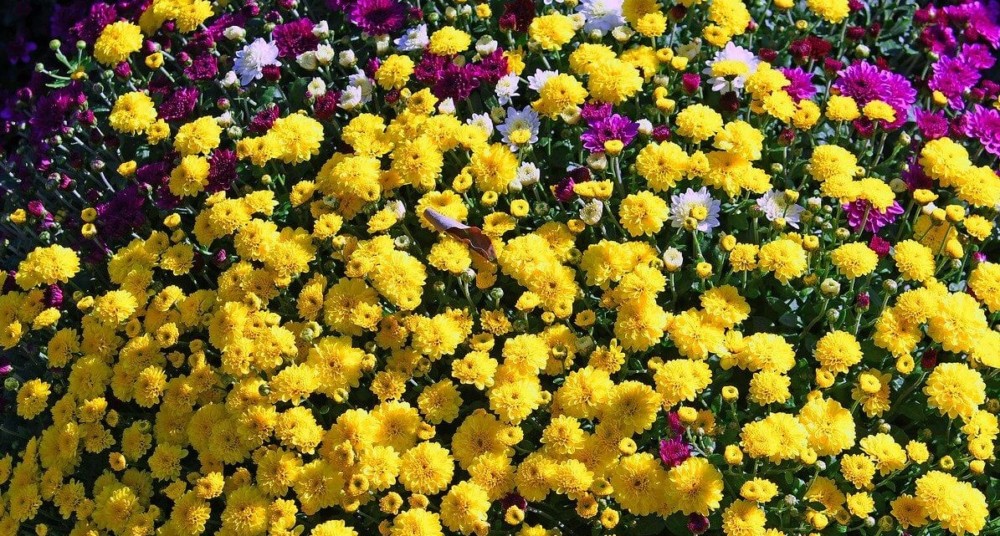
Group flowers by shape, color, and type. This will attract bees more than mixing various colors and types of flowers in a smaller space.
If you have space, you can create larger spaces for bees that the bees, butterflies, and birds will all enjoy. In larger spaces, plan flowers together in 1 square yard space to make them easier to find.
Raise a Beehive
Beekeeping is a hobby that is becoming popular, even in urban and suburban areas. Raising a colony of bees helps to preserve honeybees and all the benefits they bring.
Did you know?
Honey Bees are not often aggressive. Unless they are stepped on or threatened in some way, honey bees won’t usually sting.
The migration and introduction of the African bee have caused some hives to become aggressive and the bees cross-breed.
The level of aggression to a hive will be determined by how aggressive the queen bee is. In much of the United States, local regulations require that a queen bee is purchased from a source that can guarantee that it’s purebred. This keeps the honeybee colonies pure and less aggressive.
If you do choose to raise honey bees, then take special care to make sure they are adequately fed during the winter months. You’ll also want to make sure that the hive is adequately protected from wasps and hornets, which will try to enter the hive and eat the bee bread.
Don’t harvest honey late in the summer. Your bees will need the late summer honey to survive the winter. You can also provide additional sugar water for food, but be careful not to think that sugar water can substitute for honey during the winter. It should be used as a precaution, not a substitution.
Honey is much more nutrient-rich to bees than sugar water.
Be careful not to spill honey where waps can smell it and find your hive. If you see wasps entering your hive, make the entrances smaller or use screens to camouflage the entrances. Wasps will have a hard time getting in while the bees can still go in and out.
Other Steps You Can Take To Help Bees
In addition to the steps given above, there are many little things you can do to help the bees in your area.
In the springtime, leave twigs on the ground and leave bare areas of dirt.
In the fall, don’t rake up all the leaves. Not only are leaves great for the decomposition and revitalization of your soil, but they also provide places bees can build homes. Don’t tear down garden plants, but let the veggies bolt.
Don’t get rid of old trees that are dying or decaying. These trees provide valuable habitats for many kinds of birds and bees alike. The empty cavities in the trunk, the twigs, and bark are all helpful for various bee species.
Related Articles
Perfect Flowers That Attract Bees; Grow a Bee Garden
The importance of Bees: Foods that Require Bees



